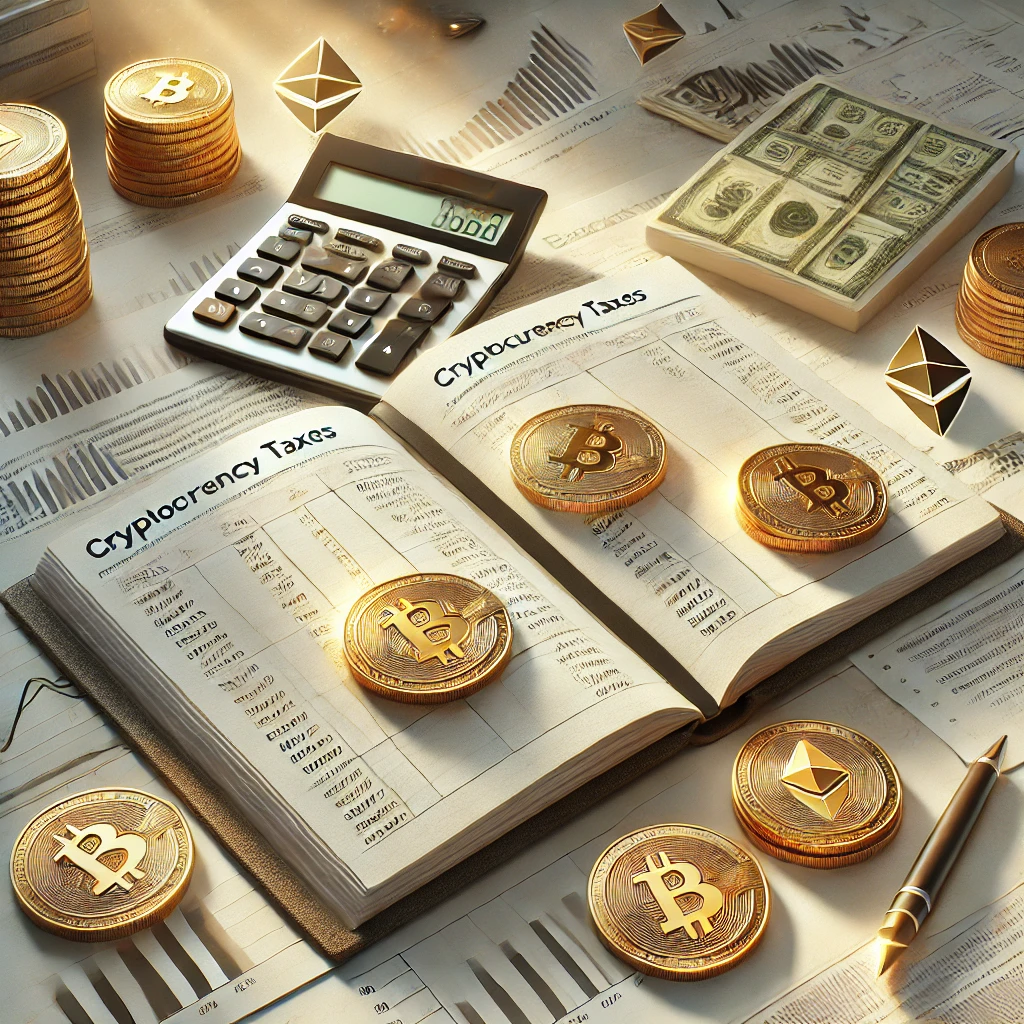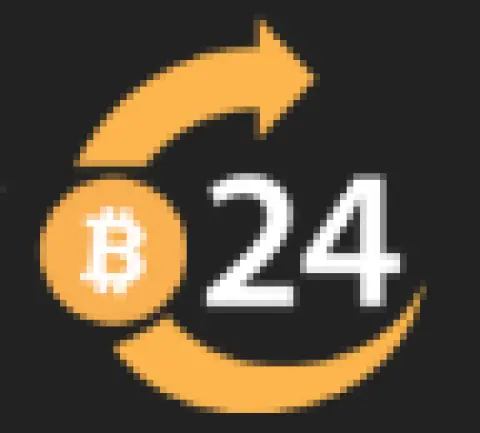Table of Contents:
Introduction to DeFi Trading Apps
Decentralized Finance, or DeFi, is revolutionizing the way we think about financial transactions. A DeFi trading app allows users to trade cryptocurrencies and other digital assets without relying on traditional financial institutions. These apps leverage blockchain technology to provide a transparent, secure, and efficient trading experience.
Unlike traditional trading platforms, DeFi trading apps operate on decentralized networks, which means there is no central authority controlling the transactions. This decentralization offers several benefits, including reduced fees, increased privacy, and greater control over your assets.
For beginners, navigating the world of DeFi can seem daunting. However, with the right guidance and tools, you can quickly become proficient in using a DeFi trading app. This guide will walk you through the basics, helping you understand how to get started, choose the right app, and make the most of its features.
What is DeFi?
DeFi, short for Decentralized Finance, refers to a broad range of financial services and products that operate on blockchain technology. Unlike traditional finance, which relies on centralized institutions like banks and brokers, DeFi uses decentralized networks to facilitate transactions directly between users.
At its core, DeFi aims to create an open, transparent, and accessible financial system. This is achieved through the use of smart contracts, which are self-executing contracts with the terms of the agreement directly written into code. These smart contracts run on blockchain networks, such as Ethereum, ensuring that transactions are secure and tamper-proof.
DeFi encompasses a variety of applications, including:
- Decentralized Exchanges (DEXs): Platforms like Uniswap and SushiSwap allow users to trade cryptocurrencies directly with one another without an intermediary.
- Lending and Borrowing: Protocols like AAVE and Compound enable users to lend their assets to others and earn interest, or borrow assets by providing collateral.
- Staking: Services like Lido Finance and Rocket Pool allow users to earn rewards by participating in the network's consensus mechanism.
- Yield Farming: Users can earn additional returns by providing liquidity to DeFi protocols and participating in various incentive programs.
By eliminating intermediaries and leveraging blockchain technology, DeFi offers a more inclusive and efficient financial ecosystem. Whether you're looking to trade, lend, borrow, or earn passive income, DeFi provides a wide array of opportunities to explore.
How to Get Started with a DeFi Trading App
Getting started with a DeFi trading app can be an exciting journey. Here are the steps to help you begin:
-
Research and Choose a DeFi Trading App: Start by researching different DeFi trading apps available in the market. Look for user reviews, security features, and the range of assets they support. Popular options include Uniswap, SushiSwap, and Curve Finance.
-
Set Up a Digital Wallet: To interact with DeFi apps, you need a digital wallet that supports cryptocurrencies. MetaMask, Trust Wallet, and Coinbase Wallet are popular choices. Download and install the wallet, then follow the setup instructions to create your account.
-
Fund Your Wallet: Once your wallet is set up, you need to add funds to it. You can purchase cryptocurrencies like Ethereum (ETH) from an exchange and transfer them to your wallet. Ensure you have enough ETH to cover transaction fees.
-
Connect Your Wallet to the DeFi App: Open the DeFi trading app and connect your digital wallet. This usually involves clicking a "Connect Wallet" button and selecting your wallet provider. Follow the prompts to authorize the connection.
-
Explore and Trade: With your wallet connected, you can start exploring the app's features. Browse the available trading pairs, check the current prices, and execute trades. Always double-check the details before confirming any transaction.
By following these steps, you'll be well on your way to using a DeFi trading app effectively. Remember to stay informed and cautious, as the DeFi space can be volatile and fast-paced.
Choosing the Right DeFi Trading App
Choosing the right DeFi trading app is crucial for a smooth and secure trading experience. Here are some key factors to consider:
-
Security: Ensure the app has robust security measures in place. Look for features like two-factor authentication (2FA), encryption, and regular security audits. A reputable app will prioritize the safety of your assets.
-
User Interface: A user-friendly interface can make a significant difference, especially for beginners. The app should be easy to navigate, with clear instructions and intuitive design. This will help you execute trades efficiently.
-
Supported Assets: Check the range of cryptocurrencies and tokens supported by the app. Ensure it includes the assets you are interested in trading. Some apps specialize in specific types of assets, so choose one that aligns with your trading goals.
-
Fees: Different DeFi trading apps have varying fee structures. Compare the transaction fees, withdrawal fees, and any other charges. Lower fees can save you money in the long run, but don't compromise on security and features.
-
Reputation: Research the app's reputation within the DeFi community. Look for reviews, ratings, and feedback from other users. A well-regarded app is more likely to provide a reliable and trustworthy service.
-
Customer Support: Good customer support can be invaluable, especially if you encounter issues or have questions. Check if the app offers support through multiple channels, such as email, chat, or social media.
By considering these factors, you can select a DeFi trading app that meets your needs and provides a secure, efficient trading experience. Take your time to research and compare different options before making your decision.
Setting Up Your Wallet
Setting up your wallet is a crucial step in using a DeFi trading app. Here’s a simple guide to help you get started:
-
Choose a Wallet: Select a digital wallet that supports DeFi applications. Popular options include MetaMask, Trust Wallet, and Coinbase Wallet. Ensure the wallet is compatible with the blockchain network you plan to use, such as Ethereum.
-
Download and Install: Visit the official website or app store to download the wallet. Follow the installation instructions to set it up on your device. Be cautious of phishing sites and only download from trusted sources.
-
Create a New Wallet: Open the wallet app and choose the option to create a new wallet. You will be prompted to set a strong password. Make sure to use a unique and complex password to enhance security.
-
Backup Your Seed Phrase: The wallet will generate a seed phrase (a series of 12-24 words). This phrase is crucial for recovering your wallet if you lose access. Write it down and store it in a secure location. Do not share it with anyone.
-
Fund Your Wallet: To start using your wallet, you need to add funds. You can purchase cryptocurrencies from an exchange and transfer them to your wallet address. Ensure you have enough to cover transaction fees as well.
-
Connect to DeFi Apps: With your wallet set up and funded, you can now connect it to DeFi trading apps. Open the app, click on "Connect Wallet," and follow the prompts to link your wallet. Confirm the connection to start trading.
By following these steps, you'll have a secure and functional wallet ready for use with any DeFi trading app. Always prioritize security and keep your seed phrase safe to protect your assets.
Exploring the Features of a DeFi Trading App
Once you have set up your wallet and connected it to a DeFi trading app, it's time to explore the features that these apps offer. Understanding these features will help you make the most of your trading experience.
Here are some common features you will find in a DeFi trading app:
-
Trading Pairs: DeFi trading apps typically offer a wide range of trading pairs. You can trade one cryptocurrency for another, such as ETH/USDT or BTC/ETH. Browse through the available pairs to find the ones that interest you.
-
Liquidity Pools: Many DeFi apps use liquidity pools to facilitate trading. Users can provide liquidity by depositing their assets into these pools and earn rewards in return. This feature is often referred to as yield farming.
-
Swapping: The core function of any DeFi trading app is the ability to swap one token for another. This process is usually straightforward: select the tokens you want to swap, enter the amount, and confirm the transaction.
-
Staking: Some DeFi apps offer staking options, allowing you to lock up your assets to support the network and earn rewards. Staking can provide a steady income stream, but it often requires a minimum lock-up period.
-
Analytics and Charts: To make informed trading decisions, DeFi apps provide various analytical tools and charts. These tools help you track price movements, trading volumes, and other important metrics.
-
Governance: Many DeFi platforms are governed by their users through a decentralized governance model. Token holders can vote on proposals that affect the platform's development and policies. Participating in governance can give you a say in the future of the app.
-
Security Features: DeFi trading apps prioritize security. Look for features like two-factor authentication (2FA), transaction confirmations, and audit reports. These features help protect your assets and ensure safe trading.
By familiarizing yourself with these features, you can navigate a DeFi trading app more effectively and take full advantage of the opportunities it offers. Always stay informed and use the available tools to enhance your trading strategy.
Security Tips for Using DeFi Trading Apps
Security is paramount when using a DeFi trading app. Here are some essential tips to help you protect your assets and ensure a safe trading experience:
-
Use a Strong Password: Always use a unique and complex password for your digital wallet and any accounts associated with your DeFi activities. Avoid using easily guessable information like birthdays or common words.
-
Enable Two-Factor Authentication (2FA): Whenever possible, enable 2FA on your wallet and DeFi trading app. This adds an extra layer of security by requiring a second form of verification, such as a code sent to your mobile device.
-
Keep Your Seed Phrase Secure: Your seed phrase is crucial for recovering your wallet. Write it down and store it in a safe place. Never share it with anyone or store it digitally where it could be accessed by hackers.
-
Be Wary of Phishing Attacks: Always double-check URLs and avoid clicking on suspicious links. Phishing attacks can trick you into revealing your private keys or seed phrase. Only use official websites and trusted sources.
-
Regularly Update Your Software: Ensure that your wallet and DeFi trading app are always up to date. Developers frequently release updates to patch security vulnerabilities and improve functionality.
-
Use Hardware Wallets: For added security, consider using a hardware wallet. These devices store your private keys offline, making them less vulnerable to online attacks. Popular options include Ledger and Trezor.
-
Monitor Your Transactions: Regularly check your transaction history for any unauthorized activity. If you notice anything suspicious, take immediate action to secure your assets and report the issue to the platform.
-
Educate Yourself: Stay informed about the latest security practices and threats in the DeFi space. Join communities, follow reputable sources, and continuously educate yourself to stay ahead of potential risks.
By following these security tips, you can significantly reduce the risk of losing your assets and enjoy a safer DeFi trading experience. Always prioritize security and remain vigilant to protect your investments.
Understanding Fees and Costs
When using a DeFi trading app, it's important to understand the various fees and costs involved. These can impact your overall profitability and trading strategy. Here are the key types of fees you may encounter:
-
Transaction Fees: Also known as gas fees, these are charges for processing transactions on the blockchain. The cost can vary depending on network congestion. For example, Ethereum gas fees can fluctuate significantly during peak times.
-
Trading Fees: DeFi trading apps often charge a small fee for each trade executed. This fee is usually a percentage of the trade amount. For instance, Uniswap charges a 0.3% fee on trades.
-
Withdrawal Fees: Some platforms may charge fees for withdrawing funds from the app to your wallet. These fees can depend on the asset being withdrawn and the platform's policies.
-
Liquidity Provider Fees: If you participate in liquidity pools, you might earn fees from traders who use the pool. However, there could also be fees associated with adding or removing liquidity.
-
Staking Fees: When staking assets, some platforms charge a fee for the staking service. This fee is typically a small percentage of the rewards earned.
-
Slippage: While not a fee per se, slippage refers to the difference between the expected price of a trade and the actual price at which it is executed. High slippage can occur in volatile markets or with large trades, leading to unexpected costs.
To manage these costs effectively:
Monitor network conditions and try to execute transactions during off-peak times to reduce gas fees.
Compare fees across different DeFi trading apps to find the most cost-effective options.
Consider the total cost of trading, including slippage, to make informed decisions.
By understanding and managing these fees, you can optimize your trading strategy and maximize your returns in the DeFi space.
Joining DeFi Trading Communities
Joining DeFi trading communities can provide valuable insights, support, and networking opportunities. These communities are filled with experienced traders and enthusiasts who share knowledge and strategies. Here’s how you can get involved:
-
Online Forums: Platforms like Reddit have dedicated subreddits for DeFi and cryptocurrency discussions. Subreddits like r/DeFi and r/CryptoCurrency are great places to start. You can ask questions, share experiences, and stay updated on the latest trends.
-
Social Media Groups: Join DeFi-focused groups on social media platforms like Facebook and LinkedIn. These groups often host discussions, share news, and provide a space for networking with other traders.
-
Discord and Telegram Channels: Many DeFi projects and communities have active Discord and Telegram channels. These platforms offer real-time communication and are excellent for staying engaged with the community. Look for official channels of your favorite DeFi projects.
-
Meetups and Conferences: Attend local meetups or international conferences focused on DeFi and blockchain technology. These events provide opportunities to learn from experts, participate in workshops, and network with like-minded individuals.
-
Educational Platforms: Websites like Medium and YouTube have numerous educational resources created by DeFi enthusiasts. Follow reputable content creators who regularly publish tutorials, analysis, and updates on DeFi topics.
By joining these communities, you can gain a deeper understanding of DeFi trading, stay informed about new developments, and connect with others who share your interests. Engaging with the community can also help you stay motivated and improve your trading skills.
Staying Updated on DeFi Trends
Staying updated on DeFi trends is essential for making informed trading decisions and staying ahead in the fast-paced world of decentralized finance. Here are some effective ways to keep yourself informed:
-
Follow Reputable News Sources: Websites like CoinDesk, Decrypt, and The Block provide up-to-date news and analysis on DeFi and the broader cryptocurrency market. Bookmark these sites and check them regularly for the latest updates.
-
Subscribe to Newsletters: Many DeFi experts and platforms offer newsletters that deliver the latest news, trends, and insights directly to your inbox. Subscribing to these can help you stay informed without having to search for information actively.
-
Join Social Media Channels: Follow DeFi influencers, projects, and news accounts on Twitter and LinkedIn. These platforms are often the first to break news and provide real-time updates on market trends and developments.
-
Participate in Webinars and Podcasts: Many industry experts host webinars and podcasts discussing the latest trends and developments in DeFi. Platforms like YouTube, Spotify, and Clubhouse are great places to find these resources.
-
Engage with DeFi Communities: As mentioned earlier, joining DeFi communities on Reddit, Discord, and Telegram can provide valuable insights and discussions on current trends. Engaging with these communities allows you to learn from others and share your own experiences.
-
Read Whitepapers and Research Reports: Many DeFi projects publish whitepapers and research reports that provide in-depth information on their technology and market impact. Reading these documents can give you a deeper understanding of the trends shaping the DeFi space.
By utilizing these resources, you can stay updated on the latest DeFi trends and make more informed decisions in your trading activities. Continuous learning and staying engaged with the community are key to thriving in the dynamic world of decentralized finance.
Conclusion
In conclusion, using a DeFi trading app can open up a world of opportunities in the decentralized finance space. By understanding the basics of DeFi, setting up a secure wallet, choosing the right app, and exploring its features, you can effectively navigate this innovative financial ecosystem.
Remember to prioritize security by following best practices and staying vigilant against potential threats. Understanding the various fees and costs associated with DeFi trading will help you manage your investments more efficiently. Engaging with DeFi communities and staying updated on the latest trends will keep you informed and connected with other enthusiasts.
By taking these steps, you can empower your trades and make the most of what DeFi has to offer. Whether you're a beginner or an experienced trader, the decentralized finance landscape provides numerous opportunities for growth and financial independence.
Experiences and Opinions
Navigating a DeFi trading app can be a challenge for first-time users. Many report an overwhelming interface. Users mention that the complexity of features can lead to confusion during initial trades.
One common issue is the lack of customer support. Unlike traditional platforms, help is often limited. Many users express frustration when encountering problems that require immediate assistance.
Security is another major concern. Users frequently highlight the risks of hacks and scams. Some applications have experienced breaches, causing significant losses for traders. Reports indicate that users should conduct thorough research before trusting an app. Resources like DeFipedia offer reviews that can help in this regard.
User Experience
Despite the challenges, some users find DeFi apps beneficial. The ability to trade without intermediaries appeals to many. Users appreciate the transparency that blockchain technology provides. This aspect fosters trust and engagement with digital assets.
Successful transactions often lead to a sense of accomplishment. Users enjoy the independence from traditional banks and their fees. However, transaction costs can be unpredictable. Many report high gas fees, especially during peak trading times, which can diminish profits.
Learning Curve
Many users describe a steep learning curve. Familiarity with cryptocurrency is essential. Those new to the space may find it daunting to understand wallets, private keys, and liquidity pools. Resources like community forums can help. In Reddit, users share tips and experiences that can ease this transition.
Once users overcome initial hurdles, they often express satisfaction. The sense of community among DeFi enthusiasts is strong. Many users highlight the collaborative nature of DeFi projects, making it easier to learn and adapt.
Conclusion
In summary, using a DeFi trading app can be rewarding yet challenging. Users must be prepared for complexities and security risks. However, the benefits of independence and transparency are compelling. Engaging with resources and communities can significantly enhance the experience.
Frequently Asked Questions About DeFi Trading Apps
What is a DeFi trading app?
A DeFi trading app is a decentralized application that allows users to trade cryptocurrencies and other digital assets without relying on traditional financial institutions, leveraging blockchain technology for transparent, secure, and efficient transactions.
How do I get started with a DeFi trading app?
To get started, first research and choose a DeFi trading app, set up a digital wallet such as MetaMask or Trust Wallet, fund your wallet with cryptocurrencies, connect the wallet to the DeFi app, and start exploring available trading pairs and features.
What are the security measures for using DeFi trading apps?
Important security measures include using a strong password, enabling two-factor authentication (2FA), keeping your seed phrase secure, being wary of phishing attacks, regularly updating your software, and considering the use of hardware wallets like Ledger or Trezor.
What fees are associated with DeFi trading apps?
DeFi trading apps may involve transaction fees (gas fees), trading fees, withdrawal fees, liquidity provider fees, staking fees, and potential slippage costs. It's important to understand and manage these fees to optimize your trading strategy.
How can I stay updated on DeFi trends?
Stay updated by following reputable news sources like CoinDesk, subscribing to newsletters, joining social media channels of DeFi influencers and projects, participating in webinars and podcasts, engaging with DeFi communities, and reading whitepapers and research reports.








